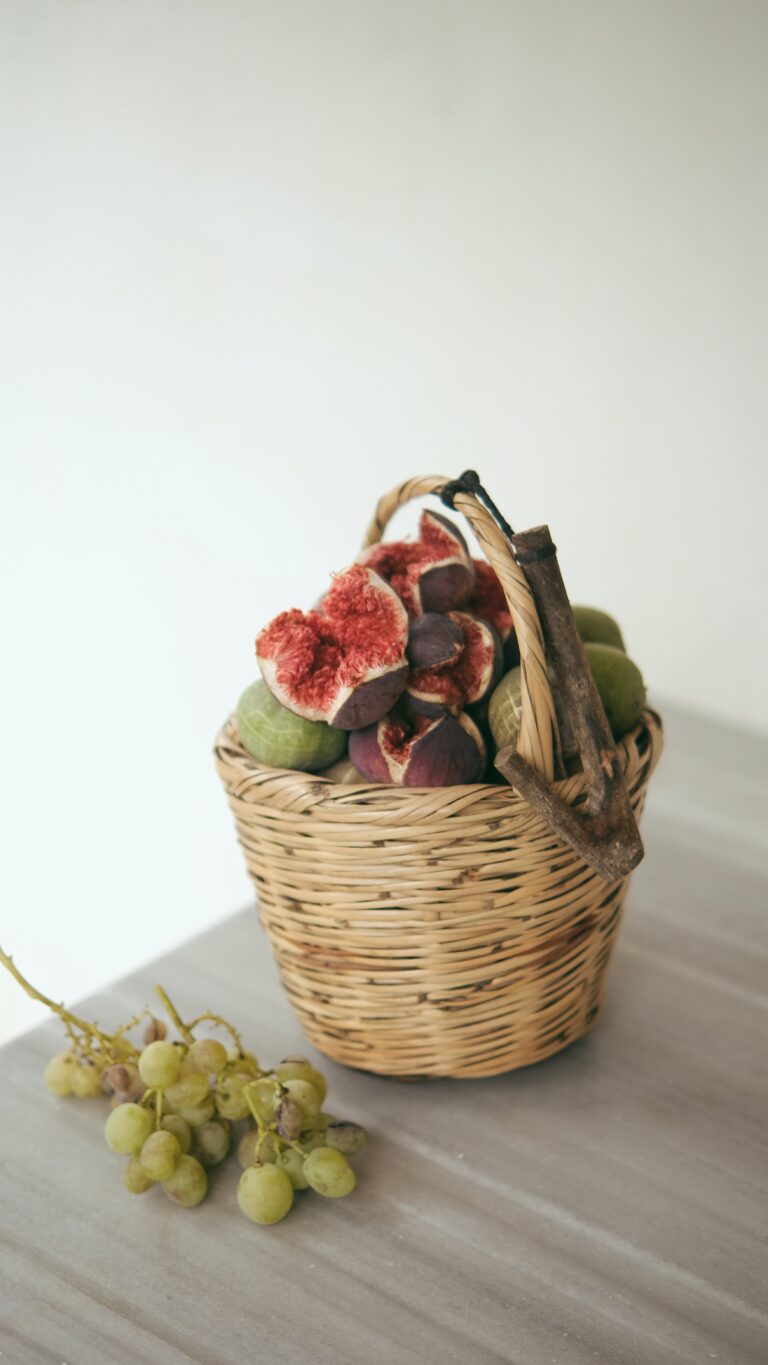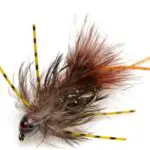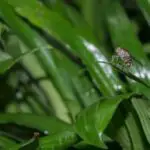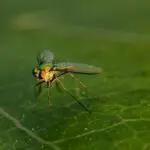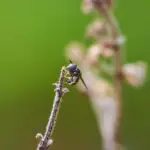Fruit Fly Trap Solutions: Effective Tactics for a Pest-Free Home
Understanding Fruit Flies: An Overview
Ever found yourself whisking away tiny, winged invaders from your kitchen counter or fruit bowl? These uninvited guests are likely fruit flies, a common household pest that manages to cause more frustration than their diminutive size would suggest. But what exactly are these bothersome creatures, and why do they seem to appear out of nowhere?
Fruit flies, scientifically known as Drosophila melanogaster, lead a rather remarkable life cycle that can be finished in as swift as a week, under the right conditions. Imagine, these tiny insects evolve from egg to adult in less time than it takes for us to finish leftovers! Their propensity to lay eggs on the surface of ripe, fermenting fruit means that a single piece of fruit can become the nursery to hundreds of larvae.

Their life story begins as a microscopic egg, deposited in batches on that slightly overripe banana you forgot to eat or the softly bruising peach in the fruit basket. In just around 24 hours, these eggs hatch into larvae, which will merrily munch away on the yeast and fungi that abound on your forgotten snacks. You might not see these tiny translucent grub-like creatures, but trust us, they are there, engorging themselves in preparation for the next stage of their life – pupation.
During pupation, these larvae encase themselves in a protective sheath, undergoing an incredible transformation into the infamous adult fruit fly that zips around your head. This is the stage you’re probably most familiar with – and the most annoyed by. Adults are prolific breeders, with females capable of laying upwards of 500 eggs, ensuring their population is always primed to exploit the bountiful buffet your home can unwittingly provide.
Now that you know how they grow, you might be wondering why fruit flies are such a common issue in homes everywhere. They are not fussy about where they set up shop, provided they have a constant source of fermenting fruit or vegetables – and in some cases, even a well-stocked compost pile or a garbage bin overdue for emptying will suffice.
Understanding their life cycle and habitat preferences is crucial when devising strategies to manage fruit fly invasions. Whether you’re dealing with a full-blown infestation or a few pesky individuals, effective pest control methods can help ensure these tiny insects don’t turn your home into their breeding ground. Stay tuned as we explore targeted tactics to combat these unwelcome guests in the following sections.
Why Fruit Fly Traps are Essential
Picture this: You’ve just hosted an epic Saturday brunch, and the kitchen is a testament to its success—stacks of sticky syrup bottles, bowls of sugary fruit salad, and a garbage can that’s seen better days. But as you’re basking in the post-brunch haze, you notice a sudden buzz. Fruit flies. These tiny winged invaders seem to have manifested out of thin air, ready to claim your kitchen as their own. Here’s where fruit fly traps become your unsung heroes, standing guard to protect your home from a full-blown fruit fly fiesta.
Let’s be blunt—fruit flies are not just a minor nuisance. They’re potential carriers of bacteria and pathogens, happily hitching a ride from place to decay-infested place, spreading contaminants as they go. Imagine a fruit fly frolicking in a trash heap one minute, then waltzing over your freshly cut melon the next. It’s not just gross; it’s a hygiene hazard. Unchecked, these diminutive pests can quickly snowball into a hygiene nightmare that threatens the sanctity of your sparkling kitchen.
Implementing a strategic fruit fly trap system is not an overreaction; it’s a battle of wits between you and an insect that reproduces faster than a broadband salesperson at the end of the month. Each female can lay about 500 eggs, and those can hatch in as little as 24 hours. Without traps, your home could become the hottest new club on the fruit fly social scene. And trust me, you don’t want your kitchen to trend for all the wrong reasons.
But there’s hope—for every savvy homeowner, there’s an equally clever trap solution. From DIY concoctions of dish soap and vinegar to store-bought saviors that lure flies to their demise, these traps are your frontline defense. No more fruit fly psychology; no more guessing where they’ll strike next. Just results—and a fruit fly-free kitchen to show for it.

Now that you understand why it’s pivotal to maintain a vigilant defense against these pesky pests, it’s time to turn that knowledge into action. Take the necessary steps to fortify your home, ensuring your counter tops and dining areas remain spotless environs, free of unwanted guests. And if you’re looking to up your game in managing household nuisances, our insights on spotting bed bugs are a tap away—arm yourself with the knowledge to keep your home pest-free.
So, yes, perhaps we can live with the occasional spider negotiating a cobweb in the corner of the ceiling. But when it comes to fruit flies, there’s no room for negotiation or half-measures. Fruit fly traps are not just essential; they’re non-negotiable for a hygienic, happy home. And your post-brunch self will thank you for it.
Types of Fruit Fly Traps
Are you in a battle with fruit flies, those tiny marauders invading your kitchen? Fear not, as we delve into the world of fruit fly traps! From store-bought contraptions to nifty DIY options, we’re analyzing what’s out there to help you reclaim your space from these pesky intruders.
First up, let’s talk about the ready-made traps. These usually come in the form of sticky traps or liquid attractants. The sticky traps, often resembling festive ribbons, lure fruit flies with their bright colors and then—wham!—trap them on their sticky surfaces. Liquid attractants, on the other hand, use a sweet-smelling concoction to draw fruit flies into a container from which they can’t escape. Some traps even use UV light to attract the fruit flies before zapping them with a small electric shock. It’s a less-than-glamorous end for our winged adversaries, but highly effective.
Now, for the creative spirits out there, DIY alternatives can be just as compelling. Picture this: an alluring bowl of vinegar with just a drop of dish soap, disguised as a vinegary spa, but in reality, a siren song for the unsuspecting flies. Or how about repurposing a used bottle, filling it with ripe fruit as bait, and creating a paper funnel that nudges the flies into their new not-so-luxurious abode? Not only are these DIY traps cost-effective, they can also be oddly satisfying to concoct.
Ready-Made Traps: Convenience vs. Craftiness
When choosing between store-bought and homemade solutions, consider your patience and craftiness. Buying a trap off the shelf offers quick relief and a cleaner look for your kitchen. However, crafting your own can lead to a sense of accomplishment and a chance to upcycle everyday items. Both methods can work in harmony, like different characters in a play, each contributing to the noble cause of a fruit fly-free home.
For those eager to learn more about eco-friendly pest control, the options are endless. Rest assured, whichever path you take—high-tech, low-tech, or no-tech—there’s a fruit fly trap that’s sure to meet your needs.
Whichever fruit fly trap you opt for, the key is in ensuring your home stays a no-fly zone. Consistency and proper maintenance of your chosen trap are the unsung heroes in this tale of eradication. And remember, it’s not about the traps you have; it’s the vigilance in using them.

Building Your Own Fruit Fly Trap: Step by Step
If you’re fed up with fruit flies buzzing around your home like uninvited guests at a summer picnic, it’s time to take action! The good news? You don’t need to be a DIY guru to create an effective fruit fly trap; you just need some simple household items and a bit of know-how. So, roll up your sleeves—it’s time to craft a concoction that will turn the tide in the battle against these pesky intruders.
Gather Your Supplies
First things first, let’s talk supplies. For this homemade trap, you’ll need:
- A clean jar or container—think empty pickle jar or plastic takeout container.
- Plastic wrap—commonly used to seal leftovers, this will be the fruit flies’ one-way ticket to trap town.
- A toothpick or sharp object—to poke inviting holes for our winged foes.
- Bait—we’re talking irresistible attractants like overripe fruit, apple cider vinegar, or even a splash of wine. Who knew fruit flies had such a refined palate?
- Some dish soap—this acts as the secret ingredient to break surface tension and ensure that once the fruit flies dip in for a drink, it’s their last.
Assemble Your Trap
Let’s put it all together. First, place your chosen bait into the bottom of the jar. Fruit flies can’t resist the scent of something sweet and fermented. Next, add a drop or two of dish soap to the bait. Pour in enough to create a thin layer over the bait without making your trap a soap spa. The soap is crucial—it’s like quicksand for the fruit flies, ensuring they can’t escape once they touch down.
Now take the plastic wrap and cover the jar’s opening, ensuring a tight seal. Imagine you’re wrapping up the world’s tiniest leftovers. Next, grab that toothpick and poke some inviting holes into the plastic. The holes should be big enough for the fruit flies to enter but not so large that they can throw a party inside. You want to create the feeling of an exclusive club—that’s the big draw for these fruit fly party-goers.
Set the Trap and Wait
With your trap assembled, place it in a spot where you’ve noticed the fruit flies hanging out. They love the kitchen, especially near the fruit bowl or garbage can. The idea is simple: the scent of the bait lures them in, they venture through the hole in the plastic, and then—bam! They’re met with a soapy surprise they hadn’t bargained for.
As you watch the fruit flies fall for your trap, consider offering them a silent nod of respect. After all, they’re just looking for a good time, but in your home, there’s a no-fly zone policy.
Ready to see what your future fruit fly trap will look like? Here’s a glimpse of a DIY hustle in action:

Remember, your homemade trap isn’t just a craft project; it’s an act of reclaiming your space. Be patient and give it a day or two. Soon enough, you’ll see the results—fewer fruit flies buzzing around and more peace of mind for you.
Don’t let fruit flies think they’re the masters of your domain. Show them who’s boss with this simple, cost-effective trap. It’s time to enjoy a pest-free home without resorting to harsh chemicals or expensive gadgets. Happy trapping!
Key Ingredients Attracting Fruit Flies to Your Trap
Ever noticed how fruit flies seem to have a sixth sense for finding the ripest peach in the bowl? It takes more than mere luck; it’s the scent of fermentation that lures them in faster than bees to honey. When crafting a fruit fly trap, the bait you choose is the make or break — and we’re all about creating that irresistible, fly-frenzied concoction.
Imagine the scene: a fruit fly hovering in your kitchen, its tiny nostrils quivering with delight at the scent of cider vinegar. That’s right, vinegar, particularly the apple cider variety, is a frontrunner in the fruit fly trap league. It’s the sour tang combined with the fruity undertones that mimic the aroma of overripe fruit, making it an almost magical lure.
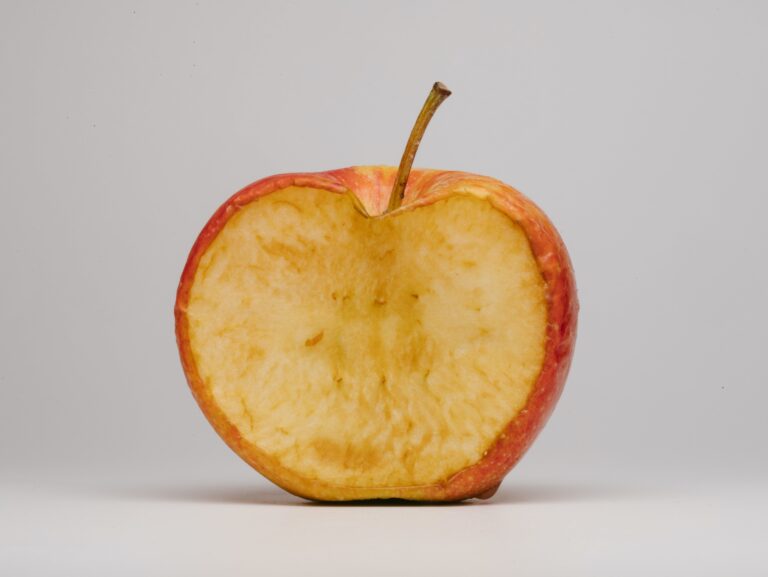
But why stop at vinegar? Let’s chat about balsamic — another potent fly magnet. Picture this: a lazy Sunday, a spill of balsamic over the counter, and a squadron of fruit flies descending like it’s their favorite festival. Their penchant for the robust, aged scent of balsamic vinegar can be your upper hand when setting your trap. Combine it with a few drops of dish soap to break the surface tension, and you’ve got fruit flies diving in with no escape.
Natural and non-toxic options aren’t just buzzwords; they’re a mantra for the savvy homeowner. So aside from vinegar, what else? Bananas! Whether it’s a chunk of the peel or a slice of the soft, sweet flesh, bananas can be the pied piper melody to your fruit fly opera. Their natural sugars and decay-prone nature are fruit fly gold.
Let’s not underestimate the seduction of a wine trap. Have a bottle that’s been open a tad too long? Don’t pour it down the drain. Fruit flies are attracted to the yeasty smell of wine, making it an excellent bait. Just a small amount in a container can draw them in. Top it with plastic wrap, poke a few holes, and fruit flies check in but they don’t check out.
The moral of this fruity saga? When it comes to trapping those pesky fruit flies, think like a grape about to turn to wine or an apple on the cusp of cider. Those are the flavors that will transform your trap from a fruitless endeavor to a fruit fly vortex of victory.
Placement and Maintenance of Your Fruit Fly Trap
So, you’re armed with a fruit fly trap and ready to declare war on these pesky invaders — terrific! But knowing where to deploy this weapon of mass insect destruction is pivotal. It’s not just about setting it up and crossing your fingers; it’s strategic placement and regular upkeep that make all the difference.
Picture this: Your kitchen, the heart of the home, a haven for food, warmth, and… fruit flies. They love hanging around the fruit bowl, anxiously waiting to dive into the bananas just on the verge of overripe. That’s your first battlefield—around the fruit bowl. Mount your trap nearby, and those troublesome trespassers will gravitate towards it instead of your Granny Smiths. Think like a fruit fly – they are suckers for sweetness and will follow their nose (or antennae).
An image related to fruit fly trap placement:
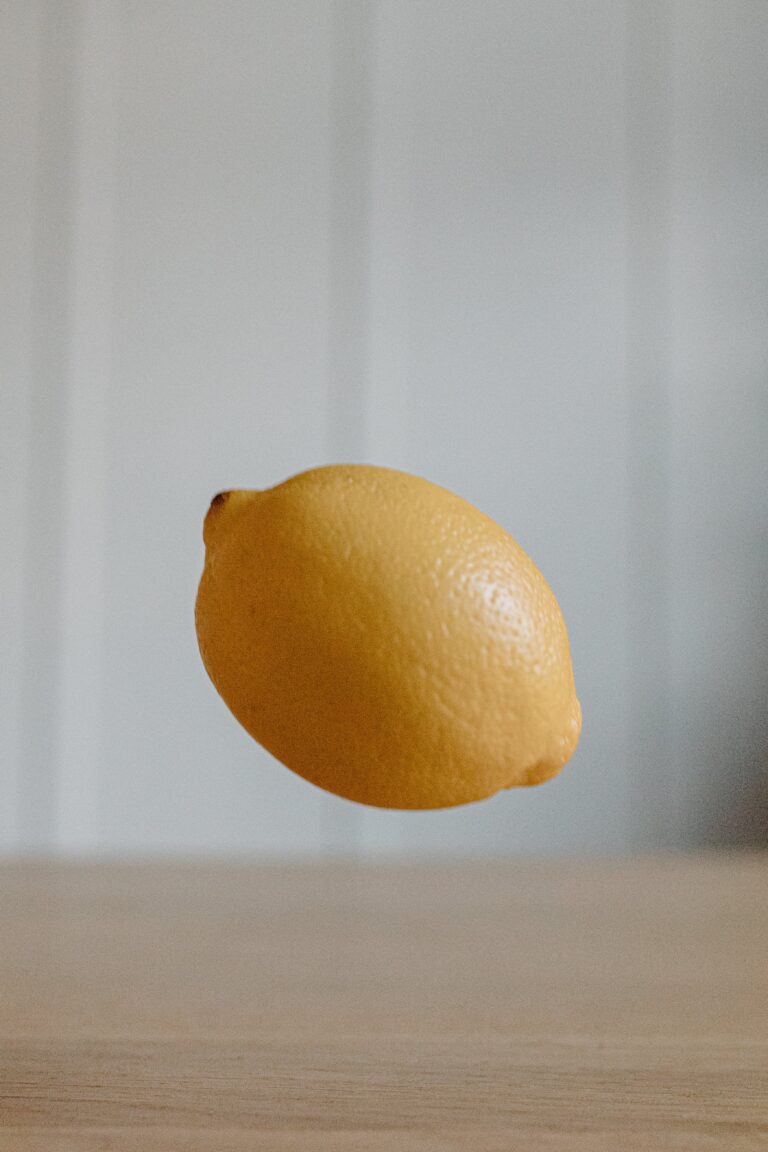
Then, there’s the trash can. It might be your least favorite spot, but it’s a fruit fly’s paradise. Placing a trap near the bin is like setting up a decoy at a spy rendezvous — they won’t know what hit them. But beware, ignoring the trap is a recipe for disaster. Don’t let it morph into a fruit fly frat house; clean the trap regularly to keep it operational.
Maintenance is key. Would you leave a mousetrap loaded with a stinky, old piece of cheese? Of course not! Replace your fruit fly trap’s attractant every month or as often as needed. Some traps might require more frequent attention, depending on the onslaught. Keep an eye on it; a full trap is like an ‘Out of Order’ sign — fruit flies will simply buzz off to the next ripe tomato.
Remember, a sparkling clean trap not only works better but will also keep your home from inheriting that funky ‘fermenting fruit’ aroma. A consistent cleaning schedule might sound like a chore, but it’s a simple task that holds the line between you and an insect invasion.
And don’t get complacent; fruit flies aren’t picky. They’ll set up camp in the recycling bin, the compost bucket, even your drain if you let them. So, distribute those traps like you’re mapping out a strategic defense system. Because that’s exactly what you’re doing — securing the perimeter of your pest-free fortress.
Preventing Future Infestations: Tips and Tricks
If you’ve successfully sent fruit flies packing, you might be breathing a sigh of relief. But don’t get too comfy just yet! It’s time to don your prevention cap and make your home a no-fly zone. By adopting some savvy strategies, you can ward off future fruit fly fiestas—so let’s dive into the nitty-gritty of keeping these pesky party-crashers at bay.
Get started with a kitchen makeover—fruit fly-style. That means going beyond the typical mop-up to ensure your space isn’t an open invitation to winged invaders. Stash ripening fruit in the fridge or sealed containers, and don’t leave any cut fruit out to tempt the tiny critters. Imagine your kitchen as a VIP area at a club—only the freshest, non-overripe produce gets a free pass.
The cleanup squad’s your next line of defense. A single breadcrumb can be a fruit fly feast, so make cleaning a ritual more regular than your morning coffee. Tackle spills post-haste, and don’t forget those neglected nooks and crannies where gunk likes to gather. A clean sink is non-negotiable—no leftover morsels or dirty dishes should crash in your sink overnight. Oh, and that garbage disposal? Give it the spa treatment by running some vinegar and baking soda through it at least weekly.
Now, enlist the help of some new best friends: tightly sealed lids on trash cans and compost bins—it’s the equivalent of having a bouncer for pesky pests. And let’s not overlook the importance of a daily trash walk—because nothing attracts fruit flies like the sweet siren song of smelly trash.

Next up, think like a fly for a second—what’s your dream entrance? Those wee window cracks and door gaps, no doubt! So it’s time for some DIY reinforcements. Seal up those entry points where possible, and consider investing in some fine mesh screens if you’re a fan of that fresh air flow.
For those who prefer the natural touch, it’s all about creating an environment that says, “Fruit flies need not apply.” Use fans to disrupt landing zones—these little flyers are terrible in turbulence. You can even up your game with herbs and plants like basil or mint on your windowsills to throw off their scent game.
Still need inspiration? Check out some pro cleaning tips that’ll not only polish your home to a shine but also keep the fruit fly intruders guessing why they can’t find the party. This detailed kitchen cleaning guide might just become your secret weapon.
Remain vigilant, clean like you mean it, and fruit flies will have to RSVP “no” to their next planned invasion—giving you the peace of mind you deserve in your fruit fly-free sanctuary!
Comparing Commercial Fruit Fly Solutions
With the warmer seasons, fruit flies become uninvited guests in many homes, turning your kitchen into a buzzing nuisance. But don’t lose hope; there are a range of commercial fruit fly traps that can help you reclaim your space. Let’s take a flight through the options.

First up is the classic sticky trap—a no-fuss, easy solution. It’s a simple sheet coated with a special adhesive. You place it near the problem area, and fruit flies are captured on contact. While marvelously effective at snagging these pint-sized pests, this method can be unsightly. As a sheet fills up, it becomes a display of your victory against fruit flies – but not something you’d want to showcase in your home.
Then, there’s the electric fruit fly trap – think of it as a mini bug zapper tailored for fruit flies. Often equipped with a light to attract the flies, these gadgets zap them on arrival. They’re more attractive than sticky sheets and reusable, but they do require electricity. Plus, the soft but constant crackle of fruit flies meeting their end can be unappealing to some, and downright disturbing to others.
For those seeking a more ‘natural’ route, there are traps using non-toxic attractants that lure fruit flies in only to trap them. These might use a combination of yeast, wine, or apple cider vinegar – all of which are like a siren song for fruit flies. However, effectiveness can vary, and some require you to play mixologist to create the perfect blend.
Breaking into the high-tech arena are smart fruit fly traps that connect to your phone. They not only trap but also monitor the fruit fly population. With these, you get digital reports on your fruit fly situation, which could be useful for the more data-driven among us. However, for low-tech problems like fruit flies, do we really need high-tech solutions? It’s a question of cost versus convenience.
Lastly, user reviews often highlight the bait-and-switch jar traps. You fill them with an enticing liquid, and fruit flies can get in but can’t get out – a bit like an insect version of Hotel California. They’re effective, economical, and don’t use electricity, but they can be odorous and require regular cleaning.
Choosing the right commercial fruit fly solution depends on your preference for aesthetics, hands-on maintenance, and tolerance for the traps’ strategies. Whether it’s the silent and sticky end via the adhesive sheets, the shocking conclusion with the electric traps, the natural allure of the bait traps, or the technological prowess of the smart traps, the key is to weigh these factors and find what works best for you.
The Science Behind Fruit Fly Attraction and Capture
Ever wonder what makes fruit flies flock to those traps you set out on your kitchen counter? It’s not just chance; it’s science! Let’s buzz into the sweet details of fruit fly allure and uncover the ingenuity behind effective trapping techniques.
Decoding the Bait: Why Fruit Flies Can’t Resist
Picture this: a bowl of ripening bananas sitting in your kitchen, emitting an invisible siren song to any fruit fly in the vicinity. That’s because these pesky insects have a finely tuned sense of smell that can detect the yeast and fermentation from fruits, especially as they begin to overripen. It’s like an all-you-can-eat buffet sign flashing just for them!
But how do we use this to our advantage? It’s simple: we mimic the aromatic profile of their favorite snacks. From vinegar to wine, and even a drop of dish soap mixed in for good measure, these baits are the key players in our homemade fruit fly traps. The real kicker is a dash of sweetness—a bit of sugar or fruit juice—to seal the deal. Now, that’s a recipe for a fly’s last supper!

Trap Engineering: Crafting the Perfect Fly Jail
It’s not just about the bait; the trap design is crucial too. Imagine crafting a labyrinth where the only exit is a one-way ticket to Flynirvana. This is the genius behind the ubiquitous funnel trap. With a narrow entrance leading to a spacious interior, fruit flies can easily enter but find it nearly impossible to escape.
Considering the fruit fly’s size, these traps are typically made with containers and plastic wrap or paper, fashioned into a cone with a small entry point at the tip. The fruit flies dive in, attracted by the bait, but their poor navigation skills prevent them from finding the tiny exit—they’re trapped!
So, next time you see a fruit fly hovering around, remember the lure of the perfect bait and the marvel of trap design—it’s the sweet science of capture at work!
Frequently Asked Questions
Are you tired of having fruit flies do the backstroke in your Chardonnay? Battling these tiny buzzing nuisances often leads to a series of common questions. Let’s get right into the thick of it and tackle those doubts with some fly-swatter-smackdown answers!
What’s the Best Homemade Fruit Fly Trap?
Picture this: It’s Sunday morning, and your kitchen has turned into a fruit fly fan convention. Don’t panic! A simple yet ingenious trap involves apple cider vinegar, a couple of drops of dish soap, and a glass. The vinegar lures them in, and the dish soap breaks the surface tension so they can’t escape once they take the dive. Make sure to cover the top with plastic wrap and poke tiny holes—big enough for them to enter but not leave, like a minuscule Roach Motel.
Are Fruit Flies Attracted to All Types of Fruit?
Think of fruit flies as connoisseurs of decay—they like their fruit like some of us like our cheese: the stinkier, the better. They’re mostly drawn to ripe, fermenting, or rotting fruits. So that overripe banana on your counter? It’s the Las Vegas Strip for fruit flies.
What About Store-Bought Fruit Fly Traps?
Can’t DIY your way out of a paper bag? No worries! Commercial fruit fly traps can be just as effective. They usually contain a non-toxic lure and sticky paper to trap the flies. Think of them as a fruit fly’s Bermuda Triangle—flies go in, but they don’t come out.
Why Are Fruit Flies in My Home Even When There’s No Fruit?
These little party crashers aren’t just here for the fruit bowl—fruit flies could be throwing raves in the drains, trash bags, and old bottles, too. Anywhere there’s fermentation going on or a smidgen of sweet, sticky stuff, you can bet they’ll be buzzing.
Can I Prevent Fruit Flies without Always Using a Trap?
Keep fruit flies from playing house by chucking out overripe produce, cleaning those sneaky spills under counters, and ensuring your garbage cans are sealed tighter than Alcatraz. Also, consider storing fruits in the fridge. Out of sight for fruit, out of mind for fruit flies!
Remember, the internet is full of unique and crafty fruit fly trap designs, but nothing beats consistency in cleanliness and early interception of these pesky tenants. A clean home may not be a fruit fly’s karaoke bar, but it sure can be your peace palace.
